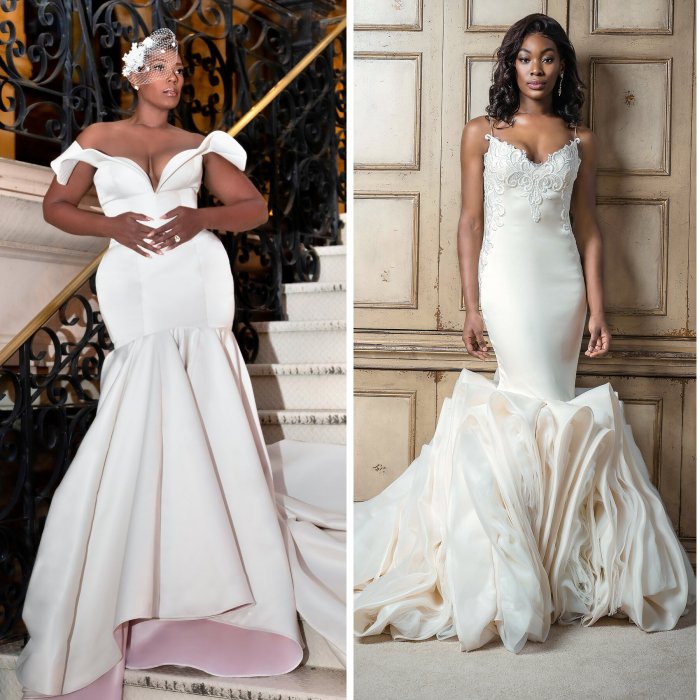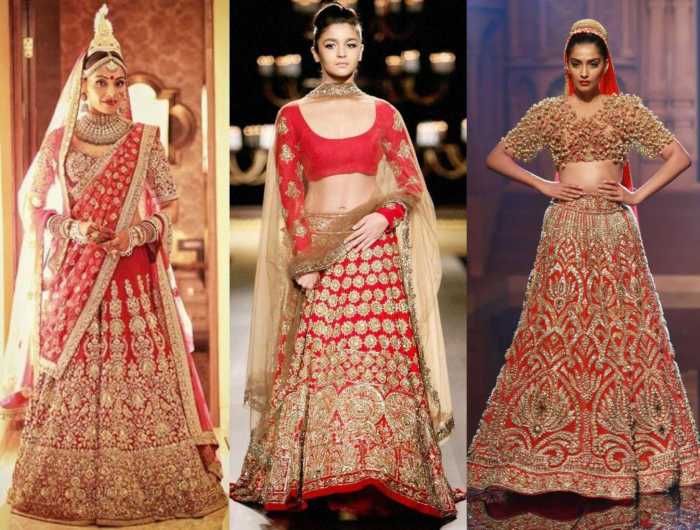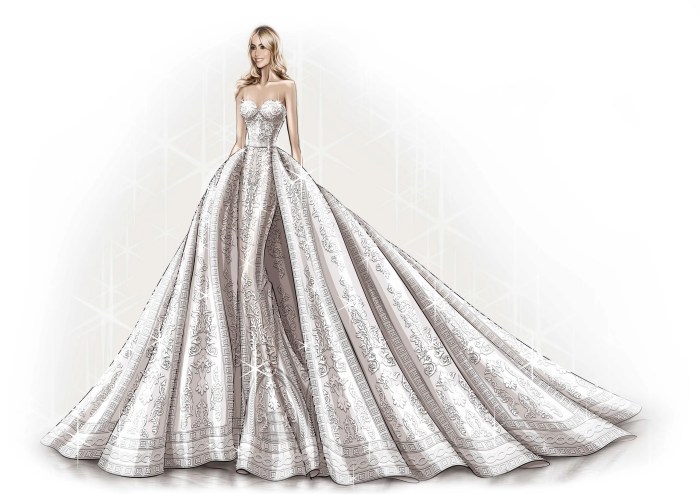Defining “Good” in Wedding Dress Design
Good wedding dress designers – The definition of a “good” wedding dress is subjective, varying greatly depending on individual preferences, cultural norms, and the overall wedding theme. However, several key factors consistently contribute to a dress being considered exceptional. These factors encompass design elements, craftsmanship, fit, and the emotional resonance the dress evokes in the wearer.
Factors Contributing to a High-Quality Wedding Dress
Several elements elevate a wedding dress beyond the ordinary. Exceptional craftsmanship, using high-quality fabrics like silk, lace, or tulle, is paramount. Intricate detailing, such as hand-beading or embroidery, adds a touch of luxury. A flattering silhouette that complements the bride’s body type is crucial. Finally, the dress should reflect the bride’s personal style and evoke a feeling of confidence and joy.
Diverse Perspectives on Wedding Dress Design, Good wedding dress designers
Cultural influences significantly shape perceptions of ideal wedding attire. Traditional Western weddings often feature elaborate gowns, while some Eastern cultures may favor more modest designs. Modern trends introduce minimalist aesthetics alongside classic silhouettes, showcasing the evolving landscape of bridal fashion. The balance between timeless elegance and contemporary trends is key to creating a design that transcends fleeting styles.
Timeless Elegance versus Current Trends
A successful wedding dress design often strikes a balance between enduring elegance and current fashion trends. Classic silhouettes, such as A-line or ballgown, remain popular due to their flattering nature and timeless appeal. However, modern designers incorporate contemporary elements like unique necklines, unconventional fabrics, or asymmetrical designs to add a fresh perspective. This blend ensures the dress remains stylish without sacrificing its enduring quality.
Identifying Top Wedding Dress Designers

Source: nyt.com
Numerous talented designers contribute to the world of bridal fashion, each with a unique design philosophy and aesthetic. The following table categorizes some renowned designers by style, providing a glimpse into their diverse approaches.
Table of Renowned Wedding Dress Designers
| Designer Name | Design Style | Price Range | Notable Features |
|---|---|---|---|
| Vera Wang | Classic, Modern | High-end | Architectural silhouettes, intricate detailing |
| Monique Lhuillier | Romantic, Classic | High-end | Lace, delicate embellishments, flowing fabrics |
| Oscar de la Renta | Classic, Romantic | High-end | Sophisticated silhouettes, luxurious fabrics |
| Galia Lahav | Bohemian, Romantic | High-end | Intricate beading, unique silhouettes |
| Anne Barge | Classic, Modern | Mid-range to High-end | Clean lines, elegant simplicity |
Design Philosophies of Prominent Designers
Vera Wang is known for her architectural silhouettes and modern approach to bridal design. Monique Lhuillier’s designs are characterized by romanticism and delicate embellishments. Oscar de la Renta’s legacy embodies classic elegance and sophisticated tailoring. Galia Lahav’s creations are often described as glamorous and avant-garde, while Anne Barge focuses on minimalist elegance and clean lines. The contrast between Vera Wang’s modern, architectural designs and Monique Lhuillier’s romantic, lace-focused creations exemplifies the diversity within high-end bridal fashion.
Analyzing Design Elements of Popular Wedding Dresses: Good Wedding Dress Designers

Source: beautyandmakeuplove.com
Popular wedding dress styles are defined by key design elements that contribute to their overall aesthetic appeal. These elements include silhouette, fabric choice, embellishments, neckline, and sleeve styles. Understanding these elements allows for a more informed selection and appreciation of bridal fashion.
Impact of Fabrics and Design Elements
The choice of fabric significantly impacts the drape, texture, and overall feel of a wedding dress. Lace adds a romantic touch, silk provides a luxurious sheen, and tulle offers a light and airy effect. Embellishments such as beading, sequins, or embroidery can add sparkle and intricate detail. Necklines and sleeve styles further shape the overall silhouette and aesthetic, influencing the formality and style of the dress.
Example Wedding Dress Design
A hypothetical wedding dress could feature an A-line silhouette crafted from ivory silk crepe. Delicate Chantilly lace appliqués would adorn the bodice, while a simple satin sash would cinch the waist. The neckline would be a classic sweetheart, and the sleeves would be three-quarter length, finished with delicate lace cuffs. This design blends classic elegance with modern simplicity.
Influence of Necklines and Sleeves
Different necklines dramatically alter a dress’s appearance. A strapless neckline creates a dramatic look, while a high neckline offers a more modest and sophisticated feel. Similarly, sleeves can range from sleeveless to long sleeves, influencing the formality and overall style. Cap sleeves offer a touch of elegance, while long sleeves can create a regal or romantic aesthetic.
Exploring the Business Aspects of Wedding Dress Design
The wedding dress industry involves a complex process encompassing design, manufacturing, marketing, and sales. Understanding the business aspects provides insight into the challenges and opportunities within this specialized market.
Manufacturing Process and Pricing Strategies

Source: vogue.com
High-end wedding dresses often involve intricate handwork and meticulous attention to detail. The manufacturing process may include pattern making, cutting, sewing, embellishment application, and final finishing. Pricing strategies vary, influenced by factors such as brand recognition, fabric quality, craftsmanship, and design complexity. Many designers use tiered pricing based on the level of detail and customization.
Sustainability and Ethical Sourcing
Growing awareness of environmental and social responsibility is driving change within the wedding dress industry. Sustainable practices involve using eco-friendly fabrics, minimizing waste, and ensuring ethical sourcing of materials. Transparency in the supply chain is becoming increasingly important for conscious consumers.
Challenges Faced by Wedding Dress Designers
Wedding dress designers face challenges such as competition, fluctuating market trends, and the need to balance creativity with profitability. Maintaining brand identity while adapting to evolving customer preferences requires continuous innovation and a keen understanding of market dynamics. The impact of economic fluctuations and global events also significantly affects the industry.
Illustrating Wedding Dress Designs
Visualizing wedding dress designs through detailed descriptions enhances understanding of their aesthetic and construction. The following descriptions showcase diverse styles and design elements.
Ballgown Silhouette Wedding Dress
This ballgown features a voluminous skirt crafted from ivory silk organza, cascading into a cathedral-length train. Intricate Alençon lace detailing adorns the fitted bodice, extending to the shoulders and sleeves. Swarovski crystals delicately embellish the lace, adding subtle sparkle. The overall aesthetic is romantic and regal, suitable for a formal wedding.
Minimalist A-Line Wedding Dress
This minimalist A-line dress showcases clean lines and luxurious simplicity. Crafted from heavy silk crepe, the dress features a simple scoop neckline and a fitted bodice that flows gracefully into a flowing skirt. The absence of embellishments emphasizes the quality of the fabric and the impeccable tailoring. The overall aesthetic is sleek, modern, and sophisticated.
Bohemian Wedding Dress
This bohemian-inspired wedding dress is crafted from flowing silk chiffon, featuring delicate embroidery with floral motifs. The dress features a relaxed A-line silhouette, with a plunging V-neckline and flutter sleeves. Natural elements, such as delicate seed beads and raw silk accents, are subtly incorporated into the design. The overall aesthetic is romantic, free-spirited, and effortlessly chic.
Modern Architectural Wedding Dress
This modern wedding dress boasts a unique architectural design, incorporating unconventional materials like laser-cut leather panels and structured silk organza. The bodice features sharp angles and geometric shapes, contrasting with the flowing skirt. The dress is devoid of traditional embellishments, emphasizing the innovative construction techniques and the interplay of textures. The overall aesthetic is avant-garde, bold, and strikingly modern.
Quick FAQs
How much should I budget for a wedding dress?
Budgeting depends on your style and designer. Prices range widely, from a few hundred dollars to tens of thousands. Consider setting a realistic budget early in your search.
How far in advance should I start looking for a wedding dress?
Ideally, begin your search 9-12 months before your wedding to allow ample time for alterations and potential delays.
Choosing a wedding dress is a multifaceted process, demanding careful consideration of fabric weight and design. Good wedding dress designers understand the interplay of these factors with the season; for October nuptials, consider the options presented in this helpful guide on dresses for oct wedding to ensure your gown is both stylish and comfortable. Ultimately, a skilled designer will translate your vision into a garment that reflects your personal style and the specific climatic conditions of your chosen date.
What questions should I ask a wedding dress designer?
Ask about their design process, customization options, fabric choices, turnaround time, and alteration policies. Don’t hesitate to inquire about their sustainability practices if that’s important to you.
Can I bring multiple people to my wedding dress appointment?
Most designers have limitations on the number of guests. Check with your chosen designer for their policy. Too many opinions can be overwhelming!
What if I don’t like any of the dresses in the salon?
Many designers offer custom design services. Discuss your vision with the designer to explore creating a truly unique gown.
